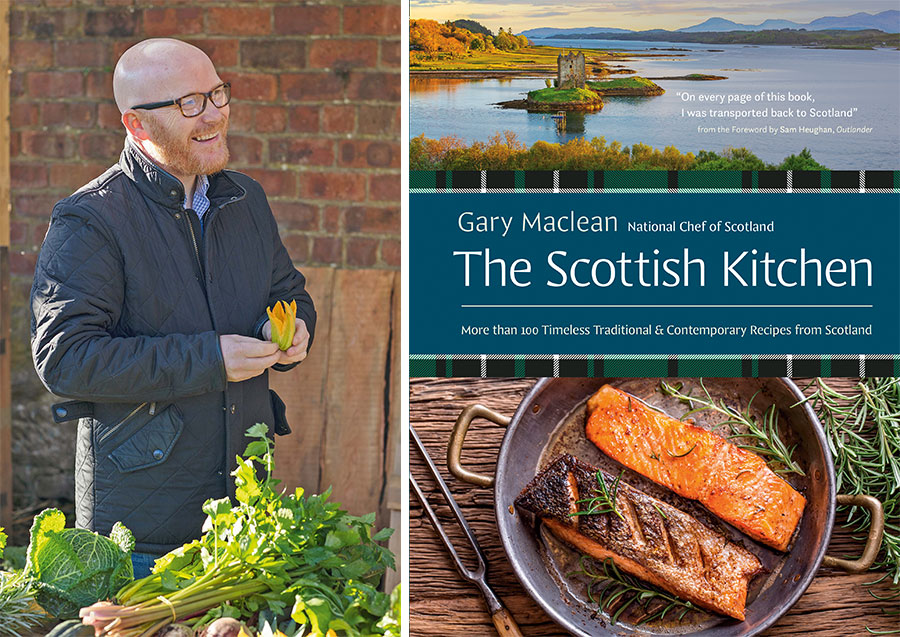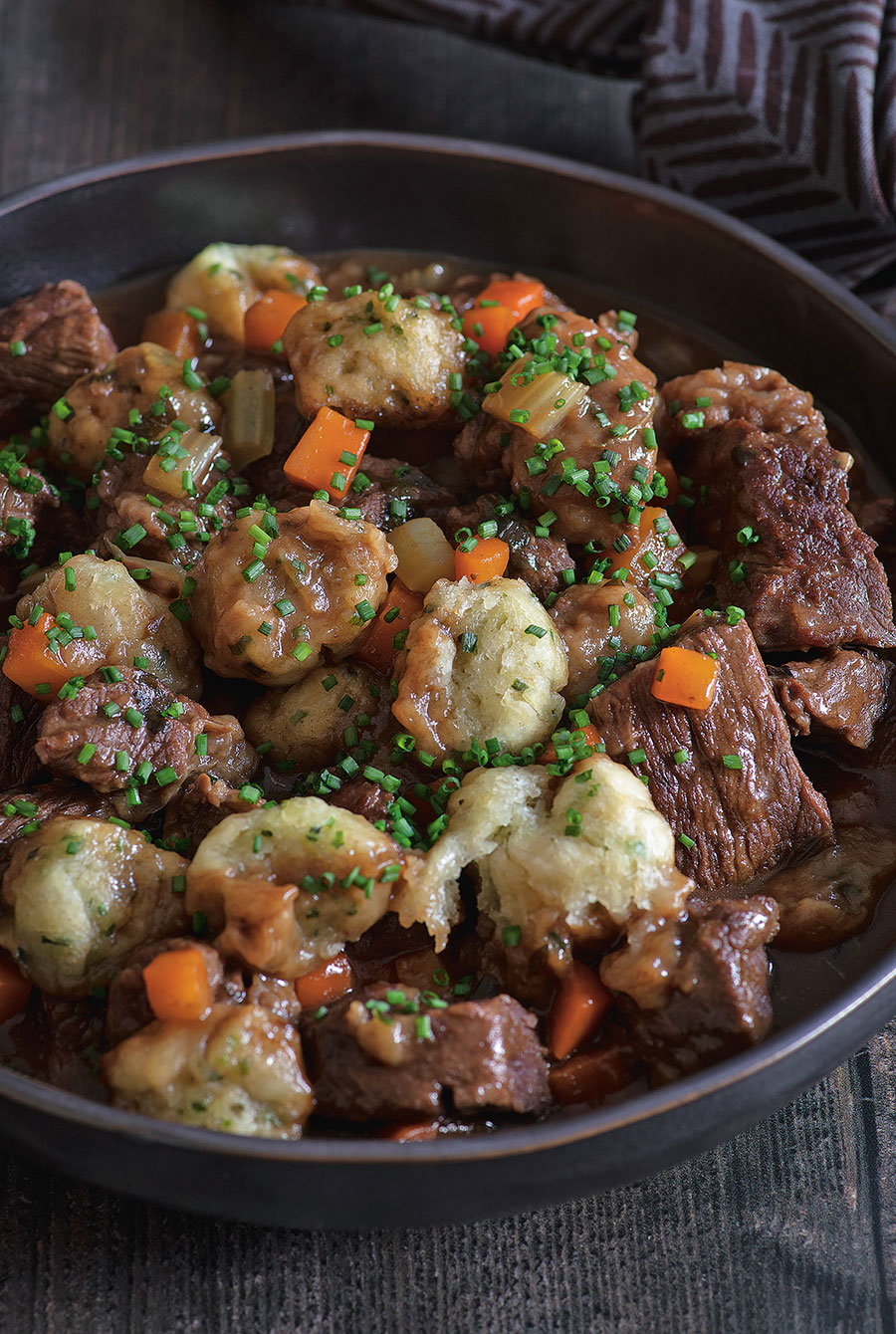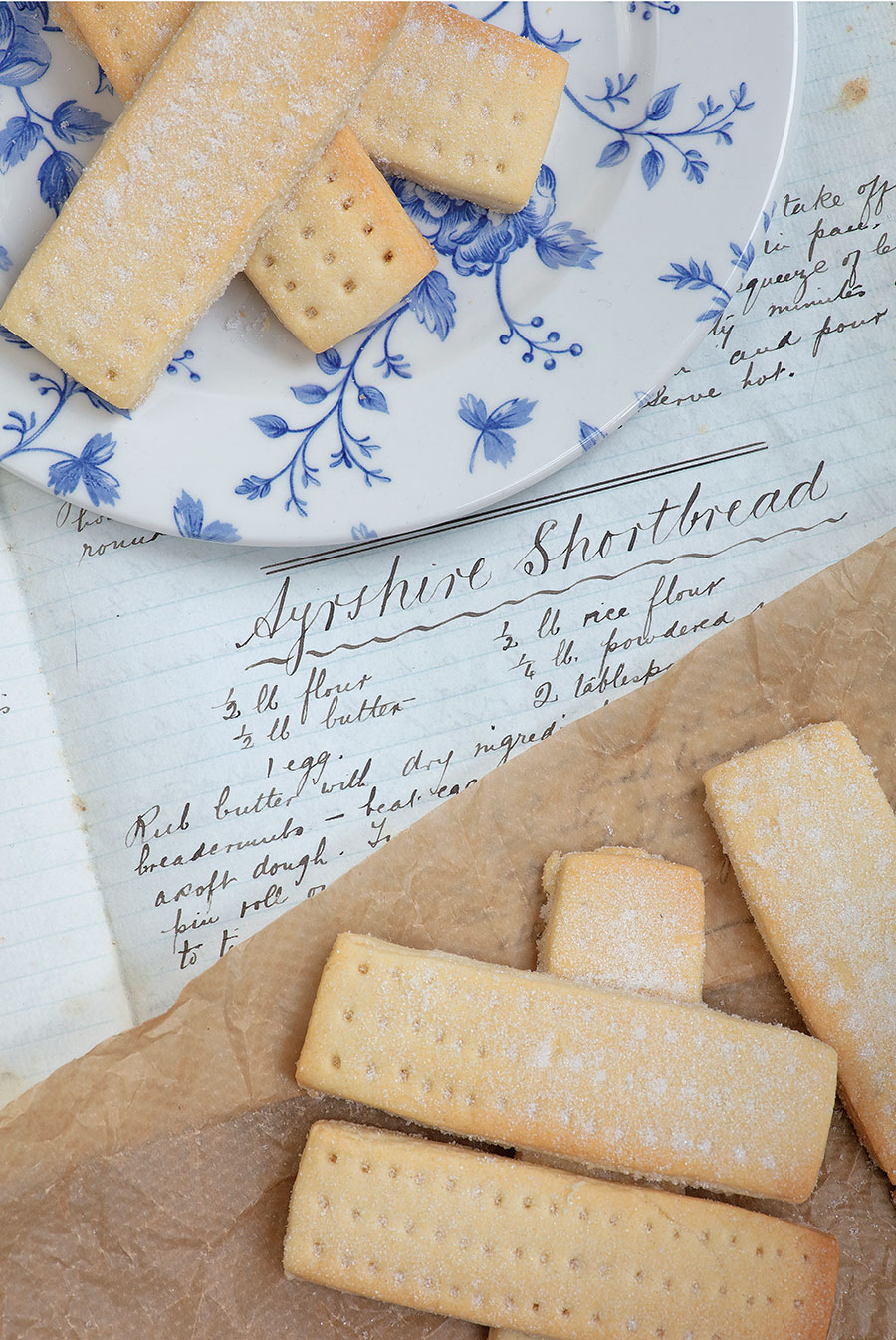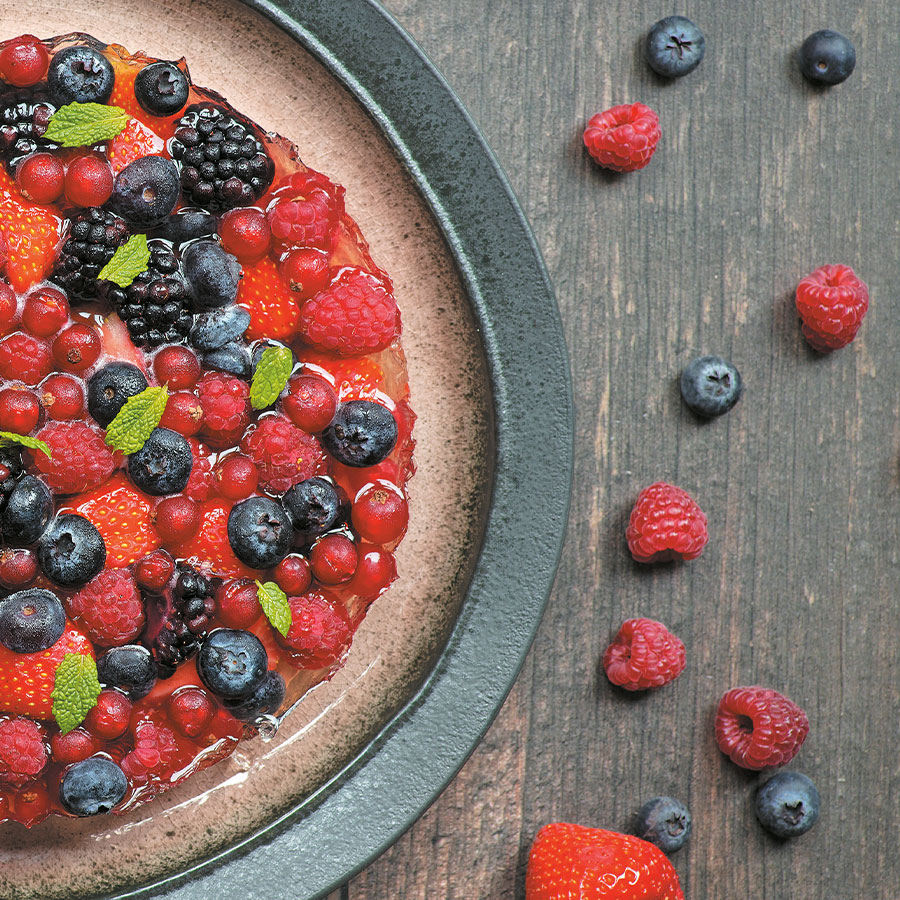‘The Scottish Kitchen’: Traditional Recipes From National Chef and TV Personality Gary Maclean

This recipe for Shortbread dates back to the 3rd of June 1893. Photo: Susie Lowe
“Wherever I wander, wherever I rove; the hills of the highland forever I love” —Robert Burns
With every recipe, you’ll be transported to bonnie Scotland in Gary Maclean’s new cookbook The Scottish Kitchen. Featuring dishes such as the country’s trademark haggis (not for the faint of heart, a staple made from oatmeal and lamb’s lungs, heart and liver), national chef and winner of BBC’s MasterChef, has compiled more than 100 recipes in this beautifully photographed tome. Many of the dishes have been passed down through families over the generations.
“I decided to write this book because I felt that a book celebrating Scottish traditional food, written for a modern kitchen and lifestyle, had not been done before,” Maclean writes in the introduction to the book.

To give you a taste of the country’s rich culinary history, we serve up several recipes from the book, including a centuries-old Braised Shoulder of Beef, a traditional Ayrshire Shortbread (1893) and, for a summery treat, a Gin Red Berry Tart. So pour yourself a cup of tea or a dram (or two) of whisky and tuck in with these timeless dishes.
RECIPES
Braised Shoulder of Beef With Suet Dumplings

Suet dumplings have been made for hundreds of years, not only in Scotland but in the whole of the U.K. and Ireland, and were especially popular during hard times. Dumplings are very inexpensive to make and great at filling you up. Cooking the dumplings in the sauce, in my opinion, is the best, as they take on loads of flavor. They are absolutely delicious when they soak up the meat juices from the beef.
Makes 4 portions
Ingredients for the Beef:
2 tablespoons (30 ml) good oil
1¾lb (800 g) shoulder of beef/chuck beef, diced
Scant 2 tablespoons (25 g) butter
2 sticks celery, peeled and diced
4 shallots, peeled and diced
3½ oz (100 g) carrots, peeled and diced
1 clove garlic, crushed
¹⁄³ cup (50 g) flour
¼ cup (50 g) tomato paste
Scant ²⁄³ cup (150 ml) red wine
3 sprigs rosemary
Small bunch thyme
1 cup (250 ml) beef stock (pre-made carton stock works for this)
Salt and pepper
Ingredients for the Dumplings:
²⁄³ cup (100 g) self-rising flour
2 oz (50 g) beef suet
Pinch of salt
Small bunch chives, chopped
¼ cup (60 ml) cold water
Note: To make your own self-rising flour, mix 1 cup all-purpose flour with 1½ tsp baking powder.
Instructions for the Beef:
- Preheat your oven to 275 F (140 C).
- In a large pan suitable for the oven, heat the oil.
- Season the beef and once the pan is nice and hot add the meat. Brown over a high heat until evenly caramelized, then remove from the pan and set aside.
- Add your butter to the pan and over a lower heat soften the vegetables for 3 to 4 minutes, then add the garlic.
- Add the flour. This will absorb any excess fat and help the sauce to thicken.
- Add the tomato paste and cook for a minute, followed by the wine, which you need to reduce by two-thirds.
- Add the beef back to the pan, along with the herbs, then add the stock and bring it up to the boil.
- Check seasoning and place the lid on the pan, then pop into your oven for 1½ hours.
- Meanwhile, make the dumplings. (See the steps below this method.)
- When ready, take the pan out of the oven and add your little dumplings.
- Spoon over some sauce, pop the lid back on, and put back in the oven until the beef is tender and the dumplings have tripled in size, about 20 minutes.
Instructions for the Dumplings:
- Sift the flour into a bowl, add the suet and mix well.
- Add a pinch of salt and your chives.
- Make a well in the center, add the water and mix lightly to form a smooth paste.
- Flour your hands and roll the paste into ¾ inch (2 cm) balls, place on a tray and add to your stew at the appropriate time.
Ayrshire Shortbread

This recipe comes from a handwritten book that was sent to me from a family who wanted me to have their great-grandmother’s recipes. Her name was Jessie Henderson and she was a student of the E.C. Training College in Edinburgh. This recipe is from her class notes dated the 3rd of June 1893. The collection is incredible — it was written in impeccable handwriting, and we are still teaching lots of these recipes today. It is my honour to share some of her recipes with you.
Makes 12 squares or fingers
Ingredients:
1 cup (225 g) butter
1½ cups (225 g) all- purpose flour
1¹⁄³ cups (225 g) rice flour
²⁄³ cup (125 g) sugar
1 egg
2 tablespoons (15 ml) whole milk
Instructions:
- Rub the butter with the dry ingredients until the mixture is like breadcrumbs.
- Beat the egg and add it to the milk, add this to the dry mix and combine until you have a soft dough.
- Turn onto a floured surface and, with a floured pin, roll out thinly.
- Cut into squares (or fingers), prick with a fork, then bake in a ‘quick oven’ at 350 F (180 C) for 10 to 15 minutes.
- Remove from the oven and dust with sugar.
Gin Red Berry Tart

For me, nothing says summer more than the start of the Scottish berry season – and gin!
Gin has been made in Scotland for more than 300 years and we produce some of the best-known brands in the world. In recent years, there has been a dramatic increase in its production here; its popularity has been the driving force of a great deal of new distilleries all over the country.
Scotland’s soft-fruit production, too, has increased recently, doubling in the last ten years alone. Soft fruit from Scotland is very sweet: the more temperate climate here allows the berries to have longer daylight hours in summer but without high levels of heat. This allows the berries to ripen slower, so they produce more sugar and you get a sweeter berry.
I developed this recipe during the lockdowns of 2020 and made it for the first time live in front of hundreds of people via Facebook. It worked a treat! This tart is best done in the summer months when the fruit is at its best.
Makes 4 portions
Ingredients:
8x 4½in (11 cm) sheets (vegetarian) gelatin
3½ oz (100 g) good quality chocolate
5 oz (150 g) shortbread
1²⁄³ cup (400 ml) elderflower soda
7 tablespoons (100 ml) gin of your choice
5 oz (150 g) strawberries
5 oz (150 g) raspberries
5 oz (150 g) blueberries
Instructions:
- The first job is to bloom the gelatin. Do this by placing the gelatin into ice water to soften: use a bowl big enough so that you can submerge the sheets whole; do not break them up.
- Melt your chocolate in a bowl set over a saucepan of simmering water. Be careful not to overheat the chocolate or get any water into it.
- Crush your shortbread in a separate bowl, then add the melted chocolate and combine.
- Line a 8-inch (20 cm) tart pan with parchment paper. Press the shortbread and chocolate mix into the tart pan and place it in the fridge to set.
- Next measure 7 tablespoons (100 ml) of the elderflower soda into a small pot, bring to the boil.
- Remove the gelatin from the ice water, making sure you squeeze out the liquid, then add the gelatin to the warm soda.
- Stir the gelatin until melted, then add the remaining 1¼ cup (300 ml) of soda and the 7 tablespoons (100 ml) of gin.
- Next, fill the tart with the fresh fruit, making sure you have a nice balance of different colors.
- Carefully pour over the elderflower and gin mixture.
- Place in the fridge until set.
Excerpted from The Scottish Kitchen by Gary Maclean. Copyright © 2022 Gary Maclean. Photographs by Susie Lowe. Published by Appetite by Random House®, a division of Penguin Random House Canada Limited. Reproduced by arrangement with the Publisher. All rights reserved.